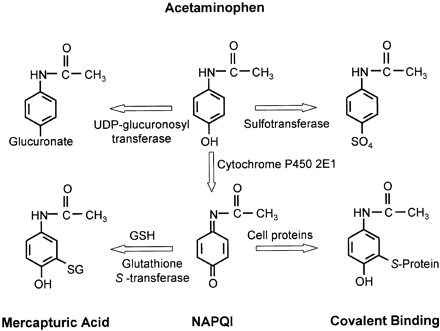Acarbose and Acetaminophen—A Dangerous Combination?
Fig. 1. Metabolism of acetaminophen. Under normal conditions, formation of the acetaminophen glucuronide or sulfate is dominating and 5% or less is oxidized to NAPQI. NAPQI can react with glutathione or can bind to cellular proteins, leading to cell death. After ingestion of a large dose of acetaminophen (>10 g), the conjugation pathways are saturated and high amounts of NAPQI are produced, potentially leading to acute liver and/or kidney failure.

Copyright © 1999 by the American Association for the Study of Liver Diseases.




